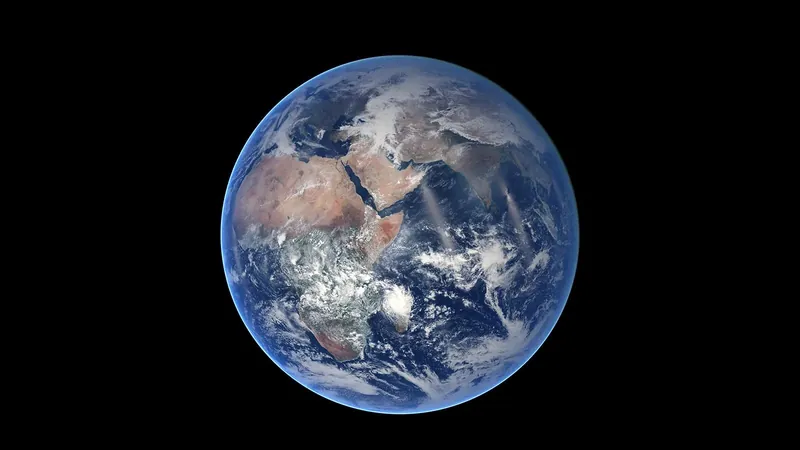
Are We Alone? The Surprising Science of Life Beyond Earth!
2025-05-30
Author: Siti
The Fascinating Quest for Habitable Worlds
The search for life beyond Earth has captivated astronomers for decades, with a sharp focus on the so-called "Goldilocks zone"—that sweet spot around stars where conditions are just right for liquid water to exist. But habitability is a much more intricate puzzle, requiring more than just a comfortable temperature. A world’s magnetic shield must fend off harmful radiation, its atmosphere must maintain a balance to support life without turning hostile, and it needs the right mix of elements born from the remnants of ancient stars.
A Groundbreaking Approach to Habitability
Enter McCullen Sandora from the Blue Marble Space Institute of Science in Seattle, who proposes an innovative new method to evaluate the habitability of distant planets by using Earth’s own location as a statistical reference. The premise is simple: if we’re not extraordinary, then our existence around a specific type of star can reveal insights into how conducive various stellar environments are for life.
The Dominance of Red Dwarf Stars
Red dwarf stars, which dominate our galaxy, outnumber yellow stars like our Sun by a staggering 7 to 3. If these red dwarf systems were vastly more conducive to life—let’s say over 8.1 times more than yellow stars—our situation would be statistically improbable, occurring less than 5% of the time. Given our current existence around a yellow star, it suggests that red dwarfs might not be significantly more hospitable than our solar system.
Exploring the Multiverse
Here’s where things get even more exciting: Sandora’s research delves into the multiverse concept, proposing that if multiple universes exist with an array of cosmic conditions, the statistical analysis becomes incredibly potent. Each universe could exhibit distinct planetary environments, from rogue planets drifting alone to water-heavy worlds or even planets locked in orbit around binary stars.
A New Laboratory for Habitability
This cosmic variety creates a unique laboratory for analyzing habitability. Sandora has extended this thinking to examine icy moons, rogue planets, and alien oceans composed of non-water substances. The findings reveal that considering these scenarios across multiple universes strengthens our understanding of habitability by at least tenfold.
Rethinking Water's Role
Most intriguingly, this approach challenges our notion of water as the ultimate solvent necessary for life. While we’ve long believed in water's unique properties—like its ability to float as ice rather than sink—the multiverse hypothesis suggests that if life consistently thrives in water-rich environments across a myriad of universes, those essential characteristics may not be as crucial as we once thought.
The Implications of Future Discoveries
If future research reveals that unexpected environments—like rogue planets—harbor life, or if alternative biochemical processes prove superior to those based on water, we may need to rethink our understanding of life itself. Sandora’s exploration, though it may seem subtle, could unlock answers to one of the grandest questions of science: Are we solitary beings in a single universe, or merely one data point in an infinite sea of possibilities?

 Brasil (PT)
Brasil (PT)
 Canada (EN)
Canada (EN)
 Chile (ES)
Chile (ES)
 Česko (CS)
Česko (CS)
 대한민국 (KO)
대한민국 (KO)
 España (ES)
España (ES)
 France (FR)
France (FR)
 Hong Kong (EN)
Hong Kong (EN)
 Italia (IT)
Italia (IT)
 日本 (JA)
日本 (JA)
 Magyarország (HU)
Magyarország (HU)
 Norge (NO)
Norge (NO)
 Polska (PL)
Polska (PL)
 Schweiz (DE)
Schweiz (DE)
 Singapore (EN)
Singapore (EN)
 Sverige (SV)
Sverige (SV)
 Suomi (FI)
Suomi (FI)
 Türkiye (TR)
Türkiye (TR)
 الإمارات العربية المتحدة (AR)
الإمارات العربية المتحدة (AR)